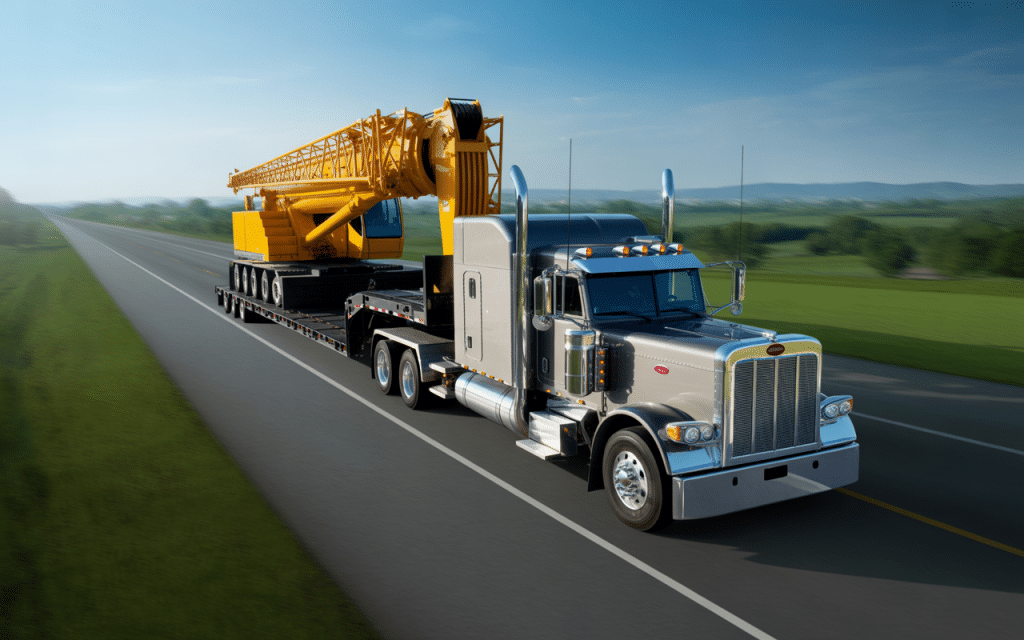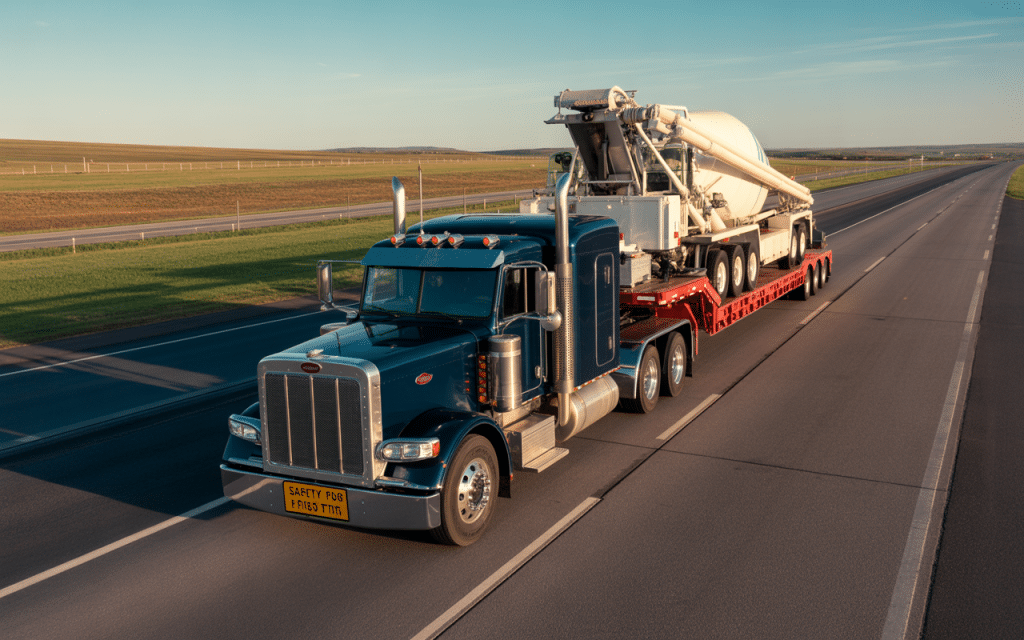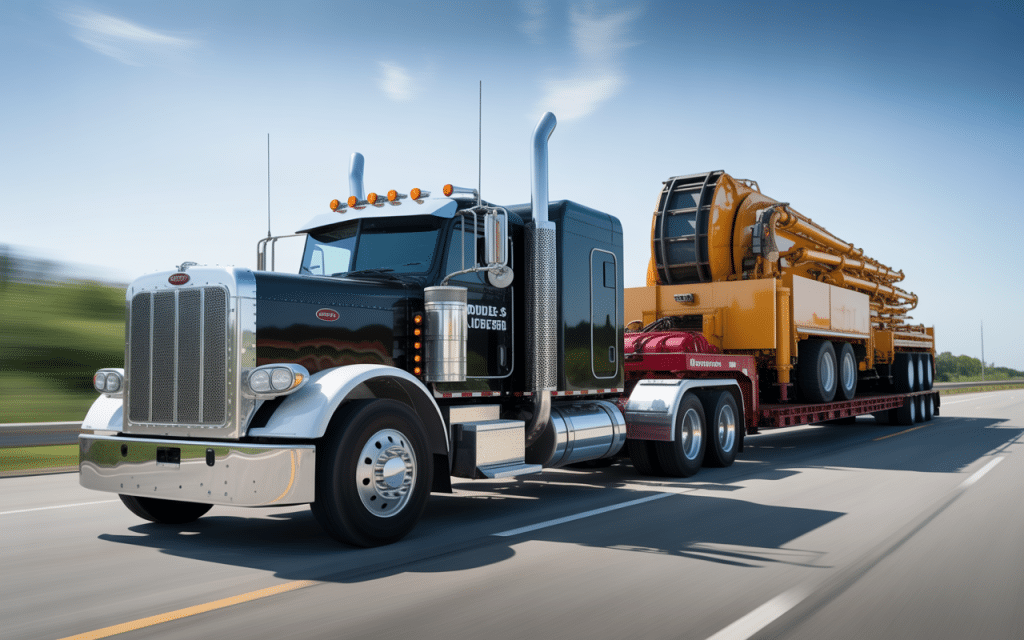How We Plan Heavy Haul Routes in Montana for Long-Distance Shipments
Freedom Heavy Haul can offer expedited Pickup and Delivery for any size shipment anywhere in the USA. Contact us today for No Hassle, No Pressure Pricing.
Planning a heavy haul across Montana requires more than just plotting a route. It’s about how we manage legal, environmental, and operational factors to ensure your cargo arrives safely, on time, and within budget. From permits to safety to terrain issues, here’s how our team handles every critical step so you don’t have to.
Regulatory Compliance Comes First
Before we move any load, we make sure every legal requirement is met to avoid fines, delays, and safety risks.
Meeting Federal and Montana State Requirements
We ensure every load complies with Montana’s legal standards for weight, length, height, and width. If your shipment exceeds normal limits, it’s considered oversize or overweight—and must be managed with strict attention to routing, scheduling, and documentation. We handle the entire compliance process for you.

Permits and Load Classification
Before anything moves, we secure the necessary transportation permits for your specific load. If your shipment qualifies as a superload, we go through extra layers of approval, which may involve route surveys, infrastructure evaluations, and agency sign-offs. We stay ahead of deadlines so your project stays on schedule.
Accounting for Montana’s Terrain and Climate
Montana’s natural environment can cause serious complications if not planned for, so we take terrain and seasonal changes into account from the start.
Navigating Mountain Passes and Elevation
Montana’s geography includes high mountain ranges, winding roads, and isolated regions. We factor in elevation changes, steep grades, and switchbacks when planning each shipment. Our drivers are trained to handle these routes, and we choose equipment accordingly.
Planning for Seasonal Conditions
Snowstorms, ice, and strong winds are common during certain months. We adjust our routes and schedules based on weather forecasts, seasonal closures, and known climate patterns. This helps reduce delays and protects your equipment during transit.
Infrastructure and Roadway Limitations
Not all roads and bridges are built to support heavy haul cargo, especially in Montana’s rural areas. That’s why we verify every route before departure.

Evaluating Roads and Bridges
Not all roads are built to handle oversize freight. Our team pre-screens every route for bridge clearances, load capacities, and road conditions. If a road or bridge doesn’t support your load, we adjust the plan well in advance to avoid last-minute surprises.
Avoiding Urban and Restricted Areas
Some loads can’t pass through narrow city streets or under low-clearance overpasses. In these cases, we reroute through more accessible paths, even if it means adding distance, because your safety and load integrity come first.
Equipment Selection Based on Load Type
Choosing the right trailer setup is essential for both safety and efficiency—your load’s design tells us what tools we need.
Matching Trailers to Freight Specifications
We choose the right trailer based on your cargo’s shape, size, and weight. From multi-axle combinations to steerable trailers and modular setups, we use what’s needed to safely move your freight across challenging terrain.
Information You Provide Helps Us Plan
When you give us exact dimensions and weight distribution of your cargo, it helps us determine the best equipment and avoid permit delays. This kind of cooperation leads to better delivery outcomes.
Safety is Built Into Every Mile
Safety is not optional in heavy haul transport—it’s central to every mile we drive and every decision we make.

Load Securement and Monitoring
Every load is properly secured using approved methods and equipment. Our team inspects each connection before departure. For oversized loads, we often assign escort vehicles to help with lane navigation, warning signals, and traffic control.
Planning for Emergencies
We prepare for unexpected delays such as weather interruptions, road closures, or mechanical issues. Our drivers follow pre-defined contingency plans, and we keep you updated throughout the journey.
Using Digital Tools for Precision Routing
Route planning today relies heavily on digital systems that help us build more accurate, efficient, and safer journeys for your load.
GIS-Based Route Mapping
We use GIS (Geographic Information Systems) to check for road gradients, bridge clearances, and restricted zones. This ensures the planned route is both legal and practical for your specific load.
Real-Time Tracking and Communication
Through telematics and GPS, we provide real-time tracking so you can monitor the location and status of your cargo. This transparency helps you plan your own operations around the delivery.
Coordinating With Public and Private Stakeholders
Large-scale heavy haul movements often require the cooperation of multiple agencies and utilities—something we manage for you.
Partnering With Utility and Government Agencies
For extremely large loads, we may need to coordinate with utility companies to raise overhead wires or temporarily adjust infrastructure. We also work with local, state, and tribal authorities when your route passes through regulated zones.
Traffic and Escort Coordination
Depending on the route and load size, we may deploy multiple escort vehicles and communicate with highway patrol to minimize public disruption and protect the shipment.
Example: Heavy Haul From Billings to Butte
To give you a real-world picture, here’s how we handled a high-stakes load across Montana.
A recent haul involved transporting a 300,000-pound mining machine from Billings to Butte. We reinforced several bridges, scheduled power line lifts, and used escort teams for four nights. Everything was coordinated ahead of time—including route surveys and community notices—and the cargo arrived safely and on time.
Why This Matters for You
When you choose us for your Montana heavy haul, you’re choosing a partner that plans with precision. We manage every detail behind the scenes, but your understanding of the process helps align expectations, supports project planning, and ensures smooth communication from start to finish.
Frequently Asked Questions
Here are some questions and answers for How We Plan Heavy Haul Routes in Montana for Long-Distance Shipments:
What is considered an oversize or overweight load in Montana?
Any load exceeding 8’6″ in width, 13’6″ in height, 80,000 pounds in weight, or 75 feet in length typically qualifies as oversize or overweight and requires permits.
How long does the permitting process take?
Standard permits can be issued within 1 to 2 business days. Superload approvals may take a week or longer due to additional clearances and inspections.
Will I receive updates during the haul?
Yes. We use tracking systems that provide live updates. You’ll always know where your cargo is and when it’s expected to arrive.
Can weather delay my shipment in Montana?
Yes. Snow, ice, and high winds can impact travel, especially in mountainous regions. We monitor conditions and adjust plans as needed to avoid delays.
What kind of trailers are used for heavy haul freight?
We use specialized trailers like RGN (Removable Gooseneck), lowboys, and multi-axle combinations depending on your freight type and dimensions.







